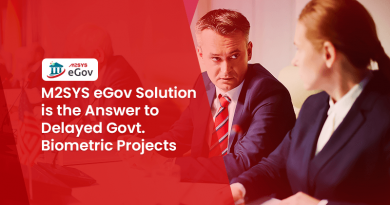Solving Government Service Delays With AI: Faster Deployment, Smarter Citizen Engagement
Nearly 70% of citizens express frustration with slow government services due to outdated systems. AI tools offer solutions by automating tasks, reducing manual workloads, and enabling personalized citizen support, thus improving efficiency and engagement in government services.
Did you know that nearly 70% of citizens report frustration with slow government services, according to a recent Pew Research Center survey? This dissatisfaction stems from outdated systems and manual processes that drag down response times. Government agencies struggle to keep up with demands for quick, tailored support, leaving people waiting weeks for simple answers. However, AI tools now offer a path forward, speeding up operations and making interactions more relevant to individual needs. In this article, we look at how these technologies tackle delays and boost citizen engagement, with a focus on personalized citizen support in government services.
What causes delays in government service delivery?
Government workers often handle a flood of inquiries through phone, email, and in-person visits. Without smart systems, they repeat the same tasks, leading to backlogs. Legacy technology adds to the problem, as it resists updates and slows down new project launches. For instance, integrating fresh tools with old databases can take months due to compliance rules and testing needs. As a result, agencies miss chances to provide timely help, eroding public trust. Moreover, citizens expect services that match their specific situations, like personalized updates on benefits or permits. Traditional setups fail here, treating everyone the same and ignoring past interactions.
How can AI reduce manual workloads for government employees?
AI steps in by automating routine tasks. Chatbots powered by natural language processing answer common questions instantly, freeing staff for more complex issues. This shift reduces repetitive work and speeds up resolution times. For example, an AI system can pull up a citizen’s history and suggest next steps without human input. Consequently, employees focus on complex cases, improving overall efficiency. Gartner studies show that automation like this can slash processing times by up to 50% in public-sector operations. And when agencies adopt these tools, they see fewer errors and happier teams.
Why do legacy systems slow down eGovernance projects?
Old infrastructure creates roadblocks for digital upgrades. Procurement cycles stretch out, and compatibility issues with existing setups delay rollouts. Agencies often wait years to implement changes that could fix service gaps. But zero-code platforms change this by letting teams build apps fast, without deep coding skills. These environments handle compliance automatically, so projects launch in weeks instead of months. Therefore, governments adapt quicker to citizen needs, like creating apps for tracking service requests in real time. To explore how such platforms work, M2SYS eGov is a valuable resource.
How does AI enable more intelligent citizen engagement?
AI analyzes data from past interactions to deliver tailored responses. If someone asks about tax filings, the system recalls their previous queries and offers specific advice. This personalization builds satisfaction, as people feel heard and valued. In turn, engagement rises—citizens use online portals more when they get relevant support. A McKinsey report finds that personalized services can increase user satisfaction by 20% in government settings. Plus, AI works across channels, ensuring consistent help whether through apps, websites, or voice assistants.
What role does rapid deployment play in improving government services?
Quick launches mean agencies respond to urgent needs without long waits. For software vendors and integrators, this reduces project risks and costs. They build solutions that fit seamlessly, avoiding the usual hurdles. For example, during the COVID-19 response, some governments deployed AI chatbots within days to handle vaccine inquiries, demonstrating the power of speed. So, faster deployment not only cuts budgets but also delivers better outcomes for citizens.
With over 20 years of experience helping governments worldwide and in the US, M2SYS has seen these challenges firsthand. Their eGov platform builds and delivers eGovernance solutions that address these exact issues. For instance, it includes AI assistants that manage inquiries efficiently and a zero-code setup for swift app creation. This approach integrates with current systems, easing deployment pains. Agencies that use similar tools report smoother operations and stronger ties with citizens.
Can personalized citizen support transform government services?
Yes, by making interactions feel custom-made. AI predicts needs based on profiles, offering proactive help, such as renewal reminders. This prevents delays and reduces the need for follow-up calls. Integrators find it easier to scale these features to match agency goals. A case from Yemen shows how modern registration systems cut disputes and built trust—registering 14 million voters digitally. Similarly, in Nigeria, a nationwide effort secured 140 million mobile users by preventing fraud through advanced data handling.
In the US, projects like workforce tracking in South Carolina streamlined attendance across 50 offices, saving time and money. Another in Las Vegas improved recreation access for 20,000 residents, ditching old cards for faster check-ins. These examples demonstrate that targeted AI solutions deliver real gains.
How to implement AI for faster government service delivery?
Start by assessing current pain points, then choose platforms that fit without overhauling everything. Train staff on new tools to ensure smooth adoption. Measure success using metrics such as response times and satisfaction scores. Over time, this builds a responsive system that evolves with citizen expectations.
AI holds the key to ending service delays, fostering trust through speed and personalization. Governments that embrace it see lasting improvements in efficiency and engagement. To explore how such platforms work in practice, check out proven solutions that have helped agencies globally.
Frequently Asked Questions
- How can AI help speed up government service delivery?
AI can reduce manual workloads by automating routine tasks and allowing government employees to focus on more complex challenges. Integrating AI technology into government operations can significantly shorten response times, as detailed in our article on Automation Software Benefits. - What are the challenges of legacy systems in government agencies?
Legacy systems often cause delays due to their resistance to updates and compatibility issues with new technologies. However, with AI and zero-code platforms, these challenges can be overcome to expedite service delivery. Discover more about these solutions in our article on Reducing Project Lifecycle. - Why is personalized citizen support crucial for government services?
Personalized support enhances citizen satisfaction and engagement by offering tailored responses based on past interactions. This approach can significantly transform government services, leading to a more efficient system. Learn about this in our piece on the Future of Identity Management.










